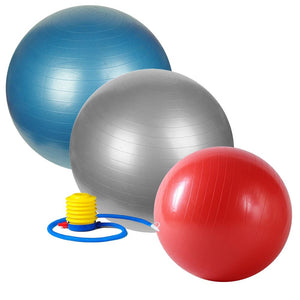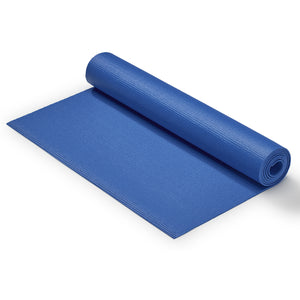Gaining strong, lean muscle is one of the best things you can do for your body. A strong body can help you carry groceries, climb stairs, and lift boxes and bags with ease!
Plus, you’ll benefit from the confidence-boosting satisfaction of trying something new, feeling more capable, and achieving a leaner composition (if that’s your goal).
If you’re worried about the changes that strength training and muscle gain might make to your appearance, promise me you’ll keep reading.
In this article, you’ll find all the information you need to know about building muscle, and how to set up your workouts to reach your goals.
Common Myths About Building Lean Muscle
If you’re looking to achieve the lean, ‘toned’ appearance so many are after, then adding resistance training to your routine is a must. But before diving into the good stuff, there are a few misconceptions we should debunk.
Myth #1: Resistance Training will Make You Bulky
Those who have never tried resistance training are often apprehensive about adding it to their routine. One of the most common misconceptions about resistance training is that it will make you ‘bulky’.
It’s important to note that it is possible to gain muscle ‘bulk’ if that’s your goal. However, to gain the significant amount of muscle needed to look bulky, you need to follow a rigorous strength training and nutrition plan.
In other words, you don’t gain muscle bulk by accident. Those you do see who are bulkier have likely followed a very specific routine and supplement intake to get to that point.
Also, keep in mind, the primary hormone responsible for muscle building is testosterone, and there is a significant difference in quantity between men and women. Men have about 15 times more testosterone than women circulating through their bodies.
Myth #2: You Have to Lift Heavy to Build Muscle Tone
You may think pumping iron and grinding it out in the gym is the most effective way to build lean muscle. The truth is that traditional strength training with barbells and power racks is only one of the ways you can use resistance to stimulate muscle growth.
Any form of resistance that your muscles must fight against that is greater than what they normally experience, can help stimulate the muscle growth process. So, other forms of resistance training like dumbbells and kettlebells, resistance bands, and even bodyweight workouts can help build lean muscle as well!
Myth #3: You Can ‘Spot Reduce’ Fat
One of the biggest lies in the fitness industry is that by working out a specific part of your body like your arms, abs, or legs with specific exercises you can reduce the subcutaneous fat in that area. This concept is called ‘spot reduction’.
For example, doing exercises only for your abs like planks, dead bugs, and crunches will not decrease the body fat in just your stomach area.
When we lose fat, we lose it in our whole body, not just one area. Everyone’s body is different, but typically fat is lost in the same order it was gained.
Myth #4: Cardio is Counterintuitive to Making Strength Gains
There’s a huge movement in the fitness industry right now that’s all about strength training only, making cardio out to be the villain. Just because cardio alone won’t get you to your goals, doesn’t mean it’s not a good addition to your overall fitness plan.
One of the most overlooked components for those looking to make changes to build lean muscle is considering fat loss. Reducing your body fat will reveal the muscle underneath you’ve been working so hard for.
Cardio is a great supplement to your routine if you’re interested in not only building lean muscle but revealing it for an overall leaned, toned look.
Myth #5: More is Better
To build lean muscle, adequate rest and recovery is essential. Strength building workouts are strenuous and cause little tears in your muscle fibers. With a proper recovery routine, your body gets the time, nutrients, and rest it needs to repair your muscles and come back stronger.
To build a good recovery routine, you’ll want to focus on a few main factors. Getting good sleep, fueling your body with nutritious whole foods, and caring for your muscles with some gentle mobility work will keep your body happy, healthy, and ready to jump into your next workout stronger!
Lean Muscle Workout Guide
Consistency is the key to progress with any workout routine. I recommend starting with a resistance training routine you’re comfortable with. If you like doing bodyweight exercises, start there. If you like dumbbells or kettlebells, use those.
Aim for a minimum of two full body workouts that target all major muscle groups. Check out the workouts below that are great examples of lean muscle building workouts that target your whole body.
For more muscle building workouts check out our workout category for tons of free strength workouts to start incorporating into your routine!
Lean Muscle Nutrition Guide
Fueling your body properly is essential to building and maintaining lean muscle mass. As I mentioned above, focusing on a whole foods diet that incorporates lots of leafy greens, veggies, whole grains, healthy fats, and lean proteins is so important for delivering the nutrients your body needs to become stronger.
When it comes to muscle building nutrition, you’ll want to pay special attention to the protein and carbs you’re providing your body with. Both nutrients play a critical role in helping your body repair and rebuild to support your body’s muscle mass on a daily basis.
So, let’s talk about protein. First, to maintain your muscle mass, you’ll want to eat at least 0.8 grams of protein per kilogram of your body weight per day. But since we’re focused on building lean muscle, you’ll want to work on increasing your intake to 1.2 - 2.0 grams of protein per kilogram of body weight daily.
And I would be remiss if I didn’t mention the importance of carbs. When high glycemic carbs are ingested before, during, and after resistance training workouts, there is an increase in the amount of the powerful hormone insulin. When insulin is increased it can help with maintaining and building lean muscle (1).
So, get your proteins and carbs, and be sure to incorporate them into a balanced diet for best results!
Get Started Building Lean Muscle
Ready to get started building lean muscle? I’ve listed a checklist below to help you get started on the right foot.
- Complete 2 full body resistance training workouts a week
- Increase protein intake to 1.2 grams of protein per kg of body weight
- Get 7+ hours of uninterrupted sleep every night
1) “Strength Training.” NSCA National Strength and Conditioning Association, 2020, https://www.nsca.com/education/articles/kinetic-select/strength-training/. Accessed 20 October, 2021.



























Add Your Name & Email
Please enter your name and email to continue.We won’t display your email publicly.
1 comment
Thank you for the tips, they are definitely being put to use !